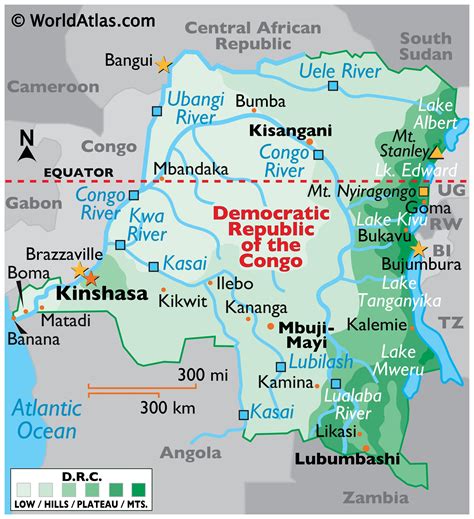Explore Tanzania’s rich history from pre-colonial times to modern developments. Learn about colonization, independence, Nyerere’s leadership, and economic/social progress in just a few clicks.
Pre-colonial Tanzania
Contents
Pre-colonial Tanzania refers to the period before the arrival of European explorers and traders in the region. It is a time that is rich in history and culture, with evidence of human settlement dating back to as early as 1 million years ago. The territory that is now known as Tanzania was home to various indigenous communities, each with their own unique languages, traditions, and way of life.
These communities engaged in agriculture, fishing, and trade, establishing complex social and political structures. The coastal regions of Tanzania were important hubs for trade with the Arab world and Asia, with goods such as ivory, gold, and slaves being exchanged for textiles, spices, and household items. The interior of the country was also inhabited by diverse ethnic groups, each with their own distinct customs and belief systems.
Clans and kingdoms emerged, with some exerting influence over larger territories and engaging in diplomacy and conflict with neighboring groups. Ironworking, pottery, and other crafts flourished, contributing to the development of vibrant local economies. The people of pre-colonial Tanzania also had well-developed religious and spiritual practices, which were deeply intertwined with their everyday lives and interactions with the natural world.
Overall, the pre-colonial period in Tanzania was characterized by dynamic cultural exchanges, complex social structures, and flourishing economic activities. This era laid the foundation for the rich and diverse heritage of the modern Tanzanian nation.
Colonization and early resistance
During the late 19th century, Tanzania, then known as Tanganyika, became a German colony after the Berlin Conference of 1884-1885. The Germans imposed harsh labor conditions and high taxes on the local population, leading to widespread discontent among the indigenous people. The resistance to German colonization was led by tribal leaders such as Chief Mkwawa of the Hehe people and Abushiri ibn Salim al-Harthi along the coastal areas.
The Germans faced numerous uprisings and rebellions from the local population, who refused to accept the harsh treatment and exploitation of their land and resources. One of the most significant rebellions was the Maji Maji Rebellion of 1905-1907, where various ethnic groups united to fight against German rule, marking one of the earliest and largest anti-colonial resistance movements in East Africa.
The resistance movements were met with brutal suppression by the German authorities, resulting in widespread violence and loss of life. The use of machine guns and harsh punishments, such as mass executions and forced labor, further fueled the resistance against colonial rule. Despite the challenges and sacrifices, the early resistance movements laid the groundwork for the eventual struggle for independence and sovereignty.
The legacy of colonization and early resistance continues to shape Tanzania’s history and identity, reminding the country of the enduring spirit of its people in the face of oppression and adversity. The struggles and sacrifices of those who resisted colonial rule are commemorated and honored as a testament to the resilience and determination of the Tanzanian people.
Independence and post-colonial era
After gaining independence from British colonial rule in 1961, Tanzania faced numerous challenges in the post-colonial era.
One of the key priorities for the newly independent nation was nation-building, which involved unifying the various ethnic groups and fostering a sense of national identity.
Under the leadership of Julius Nyerere, Tanzania pursued a policy of socialism and self-reliance, which aimed at reducing economic disparities and promoting social equality.
Despite these efforts, Tanzania faced economic challenges, including inflation and a lack of foreign investment, which hindered its development in the post-colonial era.
However, the country also made strides in education and healthcare, with improvements in literacy rates and access to basic medical services.
Tanzania under Nyerere’s leadership
Tanzania under Nyerere’s leadership was a period of significant political and social change. Julius Nyerere, the first president of Tanzania, implemented a policy of African socialism known as Ujamaa. This policy aimed to promote self-reliance and collectivism, with an emphasis on communal ownership of land and resources. Nyerere’s leadership was characterized by his commitment to Pan-Africanism and anti-colonialism, as well as his efforts to build a strong national identity.
During this time, Nyerere’s government also embarked on a program of nationalization, taking control of various industries and resources in an effort to reduce foreign influence and promote economic independence. This included the nationalization of key sectors such as banking, mining, and agriculture. Nyerere’s policies were meant to address economic inequality and redistribute wealth more equitably among the population.
Despite his efforts, Nyerere’s leadership faced significant challenges, including economic struggles and political opposition. The ambitious Ujamaa policy encountered resistance from some Tanzanians, particularly those who were reluctant to give up their individual property rights. This led to social and economic disruptions, as well as a decline in agricultural productivity.
In addition to domestic challenges, Nyerere’s leadership also faced external pressures, including the impact of global economic trends and international debts. These factors put a strain on Tanzania’s economy and led to mounting fiscal difficulties.
Tanzania has seen significant economic and social developments over the years, with various changes and reforms shaping the country’s progress. One of the key areas of development has been in the agricultural sector, with initiatives aimed at improving productivity and modernizing farming practices. This has been crucial in providing food security for the population and creating opportunities for economic growth.
Another important aspect of development has been the investment in infrastructure, including roads, ports, and telecommunications. These developments have not only improved connectivity within the country but also facilitated trade and economic activities with neighboring countries. Additionally, the focus on renewable energy sources such as hydropower has contributed to the country’s energy independence and sustainability.
Furthermore, Tanzania has made progress in the education and healthcare sectors, with increased access to primary education and healthcare services for the population. The government has prioritized initiatives to improve literacy rates and reduce maternal and child mortality, leading to overall improvements in the quality of life for Tanzanians.
The country has also seen advancements in the tourism industry, with efforts to promote Tanzania as a popular destination for wildlife safaris and beach holidays. This has not only created employment opportunities but also contributed to the country’s foreign exchange earnings and economic growth.
Overall, the economic and social developments in Tanzania have been instrumental in improving the standard of living and fostering sustainable growth for the nation.













